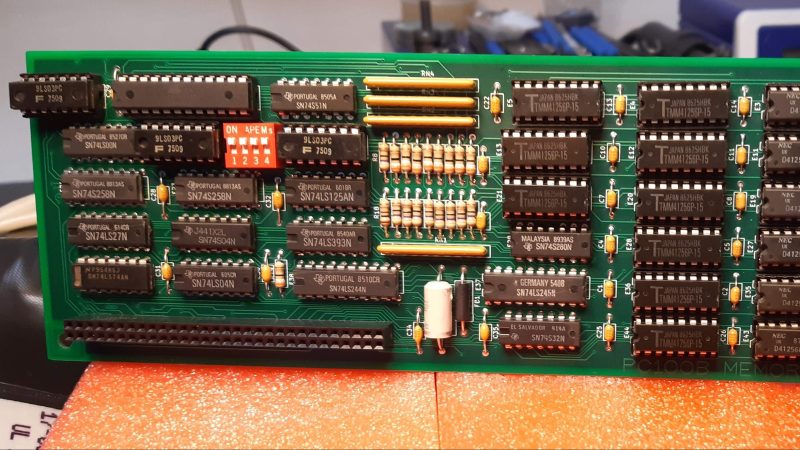It’s hard enough to get your hands on a forgotten computer from yesteryear. It’s even more difficult to get accessories like RAM expansions and graphics cards, because half the time they’re just discarded as random e-waste when they’re outside of their original context. [na103] has solved this problem for the DEC Rainbow 100 to a degree, by building new RAM expansions and graphics cards from scratch.
In the case of the RAM expansion, the design [na103] built is capable of boosting a Rainbow 100 computer to a full 896KB. This is more than other contemporary IBM machines like the 8088 XT, which had an architecture-enforced limit of 640 KB. It was rebuilt from some notes and original DEC schematics.
The GS2 graphics card was recreated in a similar fashion, also relying on some photos snagged from the internet. Its GALs and PROMs are programmed using rips from an original board. While the design is considered complete, [na103] hasn’t yet had the opportunity to build and test it yet.
The trick is, armed with the right documentation, it’s not actually that impossible to recreate old hardware yourself. If you’ve been whipping up something similar in your own workshop, don’t hesitate to drop us a line!
















That usagi electric guy’d probably find this nifty.
“In the case of the RAM expansion, the design [na103] built is capable of boosting a Rainbow 100 computer to a full 896KB.”
Cool, makes sense. Especially with the professional applications of the day, memory ran out quickly due to user data.
Add device drivers and networking drivers to the list and even a PC system in the early-mid 80s will be low on memory.
I seriously wished more vintage computer enthusiasts would make an exception to memory expansion when it comes to “period correctness”.
RAM always had been a priority, even back in the day. If it was affordable back then, most professional users wouldn’t have hesitated to do a RAM upgrade.
A RAM drive alone would have been worth it, not to say a printer spooler or disk cache (floppy/fixed).
With enough RAM, the whole workflow was improved. Compilers worked more efficiently, etc.
“This is more than other contemporary IBM machines like the 8088 XT, which had an architecture-enforced limit of 640 KB.”
Ugh, yesn’t. Common limit, yes, but not the maximum.
704 KB to 736 KB weren’t unheard of, the IBM PC/XT mainboard supported it with slight modification.
See 704K DOS utility and it’s readme. It’s from the 80s, so it’s authentic.
DOS PCs like BBC Master 512 or PC Ditto supported 704 KB out of box.
Merely EGA/VGA hardware limited conventional memory to 640 KB due to the use of A segment. With CGA, 736 is possible. With Hercules, 704 KB. Without graphics, about 900 KB (DOS via CTTY on serial terminal)..
The links to the Github are reversed (RAM leads to gfx, and vice versa).